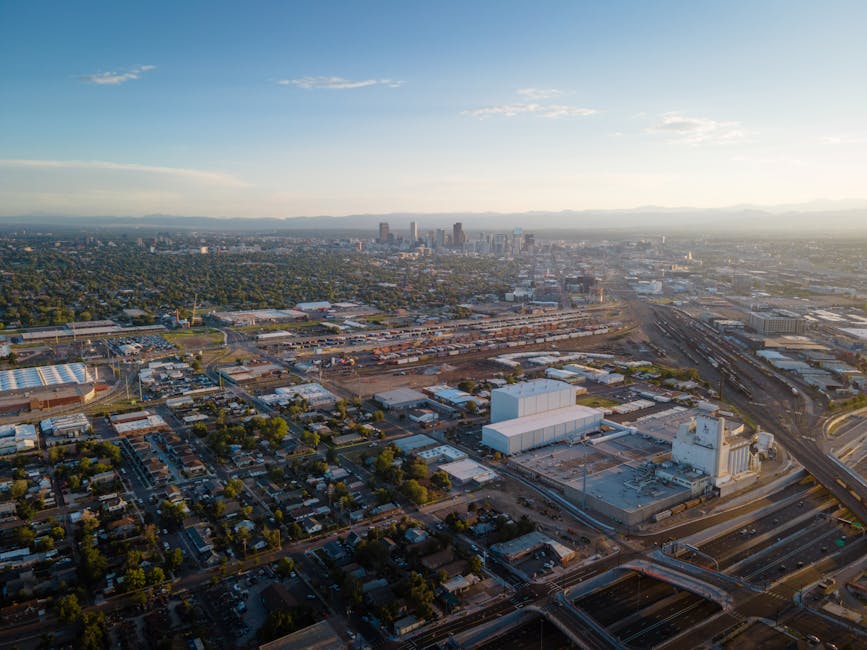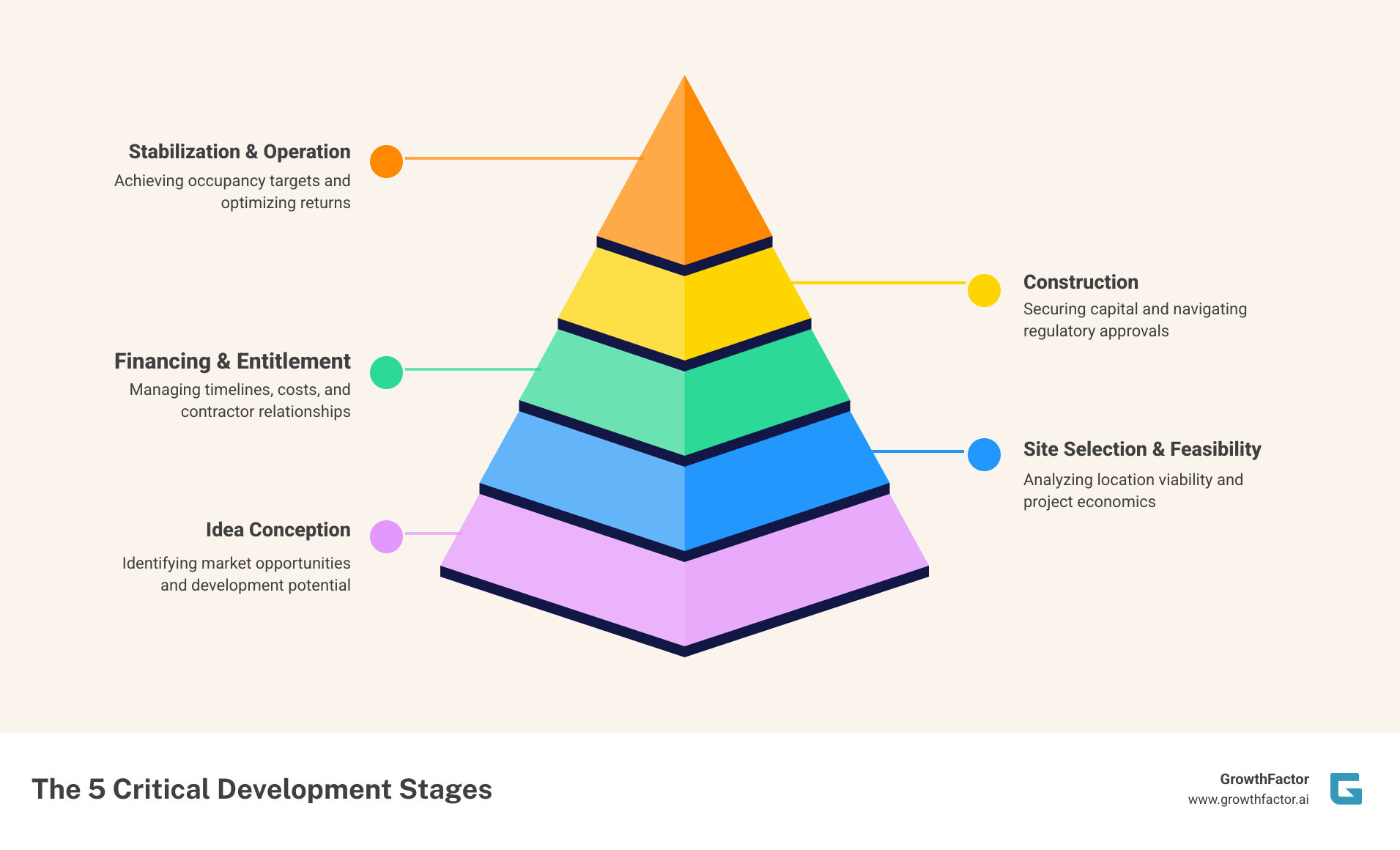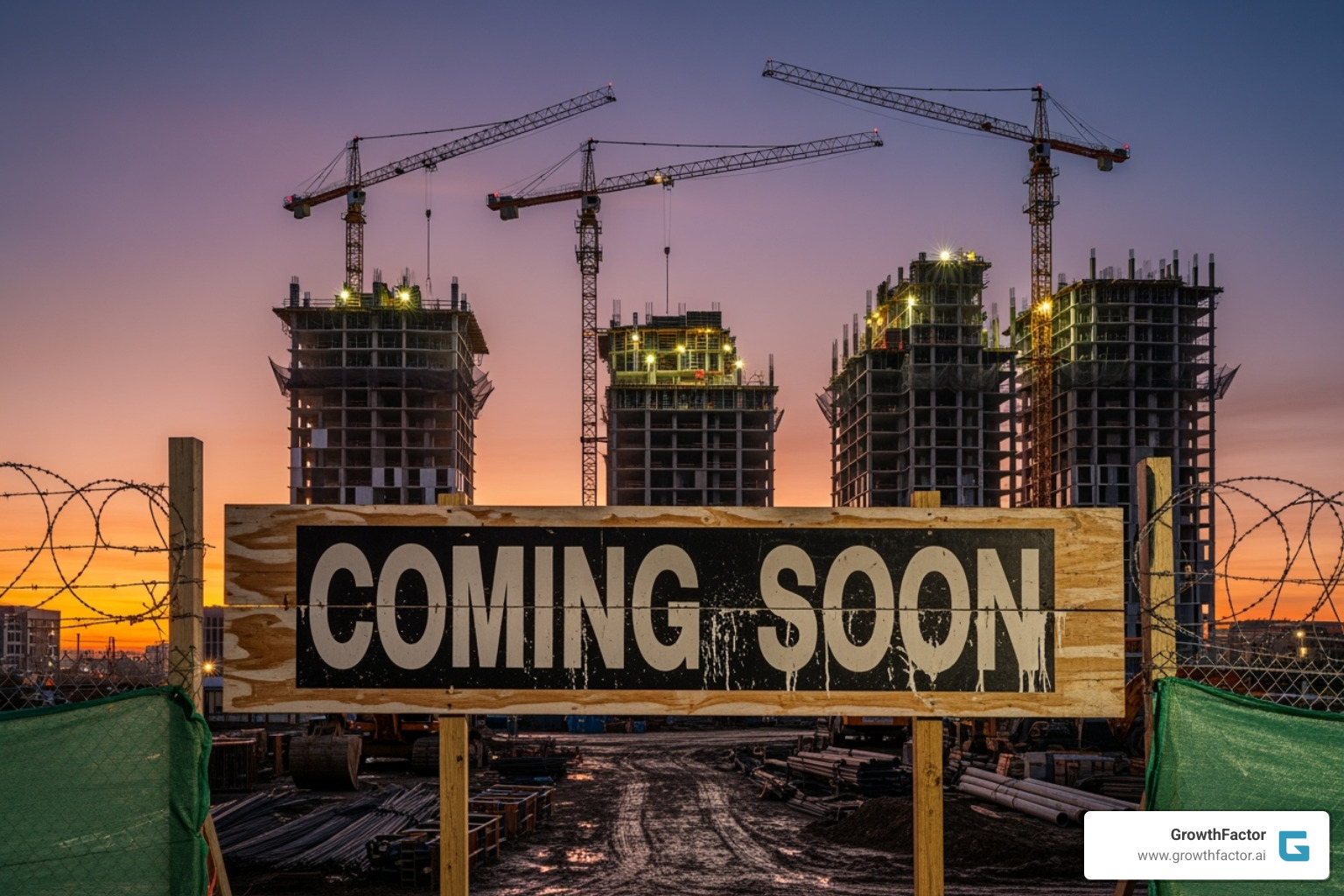Planning for Profit: Key Insights in Commercial Real Estate
Why Real Estate Development Insights Matter More Than Ever

Real estate development insights are the strategic knowledge and data-driven understanding that separate profitable projects from costly mistakes. In a high-stakes industry shaped by market analysis, financial modeling, and regulatory navigation, the right insights at the right time are critical.
The development lifecycle follows five critical stages: Idea Conception, Site Selection & Feasibility, Financing & Entitlement, Construction, and Stabilization & Operation. Each project is a unique business venture requiring its own strategy and risk assessment.
Key market realities to consider:
- Small-to-mid-sized projects in U.S. tertiary markets typically take 12-24 months.
- Development demands substantial upfront capital before any return is seen.
- The Federal Reserve's interest rate policies are a major force affecting profitability.
- Dallas/Fort Worth is a top U.S. market, with Florida cities showing strong potential.
The industry is shifting due to post-pandemic dynamics, evolving building codes, and new technologies like AI-powered analytics. These changes are widening the gap between successful and failed projects.
I'm Clyde Christian Anderson, founder of GrowthFactor.ai. With over a decade in retail real estate, I've seen how comprehensive real estate development insights improve project outcomes. That's why we built AI-powered tools to help retailers and developers make smarter, faster location decisions.
This guide gathers wisdom from industry veterans and real-world case studies to help you steer the complexities of commercial development, from market selection to the final rent-or-sell decision.

Identifying Opportunity: Market Trends and Strategic Site Selection
The difference between a profitable development and a costly mistake is knowing where opportunity lives before everyone else does. Understanding market cycles is your first line of defense. The Federal Reserve's interest rate policies affect everything from financing to demand. Recent rate shifts suggest inflation and construction costs may be peaking, but can also signal a slowing economy.
According to Emerging Trends in Real Estate® 2025, the map of hot markets is being redrawn. Dallas/Fort Worth has climbed to the top spot, while Florida cities are making a comeback. The Sunbelt remains attractive, but developers must track these shifts to gain an edge.
On the supply side, newer office buildings with amenities are outperforming older properties in a "flight to wellness." Simultaneously, an aging population is creating urgent demand for specialized senior housing that far exceeds current supply. These are concrete opportunities for developers who can meet specific needs.
This is where real estate development insights become practical. Data-Driven Site Selection helps you move beyond gut feelings, while our Site Demographics: Complete Guide explains how demographic shifts impact viability.

The Art and Science of Site Selection
Good judgment without data is just expensive guessing. The best developers blend analytical rigor with entrepreneurial instinct. Site selection involves evaluating:
- Accessibility: Highway proximity, public transit, and walkability are key. A site visit can reveal flaws not visible on a map.
- Zoning Regulations: Local ordinances dictate what you can build, including density, use, and parking. Understanding zoning is fundamental to profitability. Our What is Site Selection? guide covers these basics.
- Competition and Infrastructure: Analyze existing and planned projects to find market gaps. Planned infrastructure like roads or transit can transform a location, but verify timelines and funding.
- Community Engagement: Local opposition can derail projects, while support can smooth approvals. Understanding resident needs provides critical insights.
Feasibility studies translate site characteristics and market data into financial projections, forcing you to confront risks and evaluate returns. For retail, factors like trade area demographics and foot traffic are critical. Our Location Intelligence: Retail Guide shows how analytics can pinpoint optimal retail locations.
At GrowthFactor, our platform is built for speed and accuracy. Our Property Due Diligence and Real Estate Feasibility Study processes help you move quickly without cutting corners, as the cost of a site selection error compounds throughout the project.
The Developer's Playbook: Navigating Timelines, Risks, and Regulations
The path from concept to completion is a marathon, not a sprint. For small-to-mid-sized projects in U.S. tertiary markets, a 12 to 24-month timeline is typical, but urban infill or complex infrastructure work can extend this significantly. The main culprits for delays are entitlements (permits and approvals) and financing arrangements.
The financial reality is sobering. Before breaking ground, you'll invest tens or even hundreds of thousands of dollars in land acquisition, permits, design services, and legal fees. If the project fails, that upfront capital is gone. This risk, combined with market volatility, makes thorough Property Due Diligence and a comprehensive Real Estate Feasibility Study essential.

Key Financial Real Estate Development Insights
Construction loans are expensive and require extensive oversight, often with personal guarantees. Most developers need equity partners to share the financial burden. Unexpected costs, like soil contamination or a sudden change in building codes, can derail budgets. One developer faced a costly, un-planned water supply redirection that nearly sank their project.
Tax implications are also critical. Properties held less than a year are subject to short-term capital gains taxed as ordinary income (often >30%). Holding for over a year qualifies for lower long-term capital gains rates (15-20%), a distinction that often shapes the decision to sell or hold.
Our Real Estate Deal Analysis framework and Real Estate Investment AI tools provide insights to anticipate market shifts and evaluate projects clearly.
Common upfront development costs include: land acquisition, permits, architectural and engineering fees, environmental studies, legal fees, and market research.
Mitigating Legal and Regulatory Problems
Navigating the regulatory maze is a major challenge. Compliance with zoning laws, building codes, and environmental regulations can delay permitting by months or years. As one expert warns, development can be a dream or a nightmare. For example, one downtown mixed-use project faced a three-year delay due to zoning changes, lawsuits, and public hearings before breaking ground. For more on these pitfalls, see this collection of expert warnings on development risks.
Legal exposure continues after construction. In states like California, condo developers face construction defect litigation for up to 10 years. Finally, community opposition at public hearings can force costly plan revisions and further delays, requiring patience and compromise.
The Ultimate Question: To Rent or To Sell?
After completing a project, you face a consequential decision: hold and collect rent, or sell and move on? This choice shapes your business model, risk exposure, and capital needs. As noted in "To rent or to sell, that is the question," the core difference is whether your income is steady or a lump sum. Understanding these trade-offs is key to effective Real Estate Portfolio Optimization.
| Factor | Build-to-Rent | Build-to-Sell |
|---|---|---|
| Cash Flow | Steady, long-term rental income | Lump-sum, immediate capital infusion |
| Market Risk | More resilient; rents can adjust over time | Higher risk; dependent on market peak at sale |
| Legal Liability | Lower; direct owner-tenant relationship | Higher; construction defect lawsuits (e.g., HOAs) |
| Tax Treatment | Long-term capital gains (15-20%), depreciation | Short-term capital gains (normal income, >30%) |
| Exit Strategy | Long-term hold, cash-out refinance, portfolio sale | Quick sale, reinvestment in new projects |
The Case for Building to Rent
The build-to-rent model provides a steady income stream, creating a predictable financial foundation. This long-term mindset encourages better construction quality and proactive long-term asset management. Developers who hold their properties can also benefit from property value appreciation, especially if they invest in placemaking to improve the surrounding community.
From a risk perspective, the legal exposure is significantly lower than for condo developers, who can face defect lawsuits for up to a decade. The tax benefits are also compelling; holding for over a year qualifies for lower long-term capital gains rates, and you can deduct annual depreciation. Finally, cash-out refinancing allows you to extract equity for new projects while retaining the income-producing asset, a cornerstone of smart Commercial Real Estate Portfolio Management.
The Case for Building to Sell
For developers who prefer to keep building, the sell strategy offers lump-sum returns that enable faster capital recycling into new projects. This model allows you to scale your pipeline more aggressively.
Pre-sales are a major advantage, as they can satisfy equity requirements for construction loans and serve as an invaluable market test. The potential for market timing is also a huge draw; selling at a market peak can generate extraordinary returns that would take decades of rental income to match.
However, this is a higher variance strategy. If the market turns between groundbreaking and completion, you could be forced to sell at a loss. Many successful developers use a mixed approach, selling some units to recoup capital while holding others for rental income, balancing immediate returns with long-term stability.
The Future of Development: Key Real Estate Development Insights on Sustainability and Technology
The real estate industry is at a crossroads, driven by environmental necessity and technological innovation. ESG (Environmental, Social, and Governance) factors are now mainstream, as investors, tenants, and communities expect buildings that are sustainable and socially responsible.
The push to decarbonize the built environment is about future-proofing investments. This has led to catalytic development—projects that generate returns while creating positive community impact. As the Brookings Institution's report, "Building Better: How real estate developers can create more inclusive catalytic development projects" argues, community investment is essential for long-term success. Our AI for Property Development insights help developers steer this new terrain.
Embracing Sustainable and Innovative Construction
New construction technologies help reduce environmental impact. Mass timber, an engineered wood product, sequesters carbon and can shorten construction timelines. Prefabrication and modular construction move building into controlled factory settings, resulting in higher quality, less waste, and accelerated schedules.
Green building codes are also becoming standard, pushing developers toward higher energy efficiency and net-zero goals. Buildings with superior environmental credentials command higher rents and valuations, making sustainability not just responsible, but also profitable.
Using AI for Smarter Real Estate Development Insights
If sustainability is reshaping what we build, artificial intelligence is revolutionizing how we decide where and when. The gap between developers who leverage AI and those who don't is widening.
Our AI Real Estate Market Analysis tools process vast datasets to identify opportunities and flag risks that human analysts might miss. Predictive analytics powered by AI can forecast market trends, allowing developers to stress-test assumptions and make data-backed decisions. Our AI-Driven Analytics platform transforms raw data into actionable intelligence.
As we explored in "End the Era of Spreadsheet Purgatory: How AI is Revolutionizing Retail Site Selection," AI eliminates tedious work, freeing professionals to focus on strategy. Our Location Intelligence Platform: Complete Guide shows how these technologies provide a comprehensive view of potential sites, giving developers a competitive edge.
Frequently Asked Questions about Real Estate Development
How long does a typical real estate development project take?
For a small-to-mid-sized project in a U.S. tertiary market, a timeline of 12 to 24 months from concept to completion of Phase I is a good benchmark. However, complex projects like urban infill or those requiring significant infrastructure can take much longer. The most common delays stem from critical path items like securing entitlements (zoning, permits) and finalizing financing. For more detail, the Real Estate Development Timeline Explained offers additional perspective.
What are the biggest financial risks for a new developer?
New developers face several significant financial risks, many of which were detailed earlier. The primary risks include:
- Upfront Capital: Substantial out-of-pocket expenses for land, fees, and studies before breaking ground.
- Permitting Delays: Each month of delay adds to holding costs and loan interest.
- Market Downturns: An economic slump can reduce sales prices or rental rates, hurting profitability.
- Construction Cost Overruns: Unexpected issues like contaminated soil or material price spikes can inflate budgets.
- Interest Rate Hikes: Rising rates increase borrowing costs on expensive construction loans.
Should I convert an old building or build new?
This decision comes down to a rigorous financial analysis of the property's highest and best use. Sometimes, the land value is high enough to justify demolishing an old building to make way for a more profitable new one.
You must compare demolition costs against conversion costs. Converting an old office building, for example, can be surprisingly expensive due to structural limitations or the need to update systems to meet modern residential codes. As the New York Times' analysis of office building conversions highlights, not all buildings are good candidates.
The goal is to determine which path—conversion or new construction—leads to the best financial outcome after accounting for all costs, zoning regulations, and market demand.
Conclusion
Successful real estate development requires sharp market instincts, solid financial planning, and the ability to make tough calls. As we've explored, real estate development insights are crucial for navigating market cycles, choosing between renting and selling, and managing the substantial risks involved.
The industry is evolving, with sustainability and technology at the forefront. Innovative methods like mass timber construction and AI-powered analytics are no longer optional—they are essential for long-term relevance and profitability. Developers who accept these tools are positioning themselves to thrive.
This is where GrowthFactor comes in. Our AI-improved platform and dedicated analyst services deliver the insights needed for confident site selection and deal tracking. We help retail real estate professionals across the USA move beyond spreadsheet purgatory and make smarter decisions faster.
The developers who win in today's market are the ones with the best information. They leverage AI Real Estate Market Analysis and AI-Driven Analytics to spot opportunities others miss.
Ready to transform your site selection process? Discover how AI-powered tools can revolutionize your site selection process and give your team the competitive edge today's market demands.
Citations
The human algorithm
Request Your demo
Schedule meeting
Or submit your information below and we'll be in touch to schedule.



